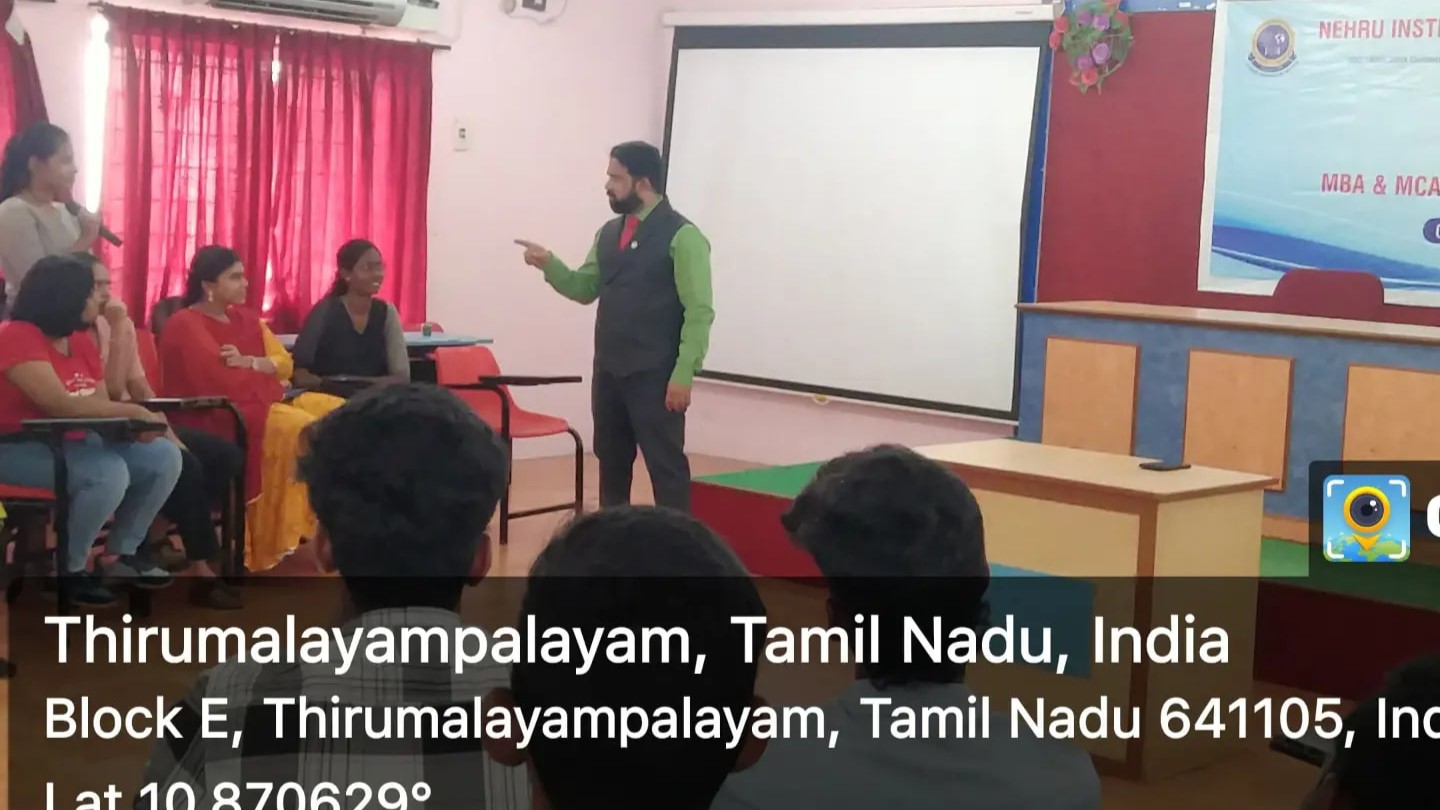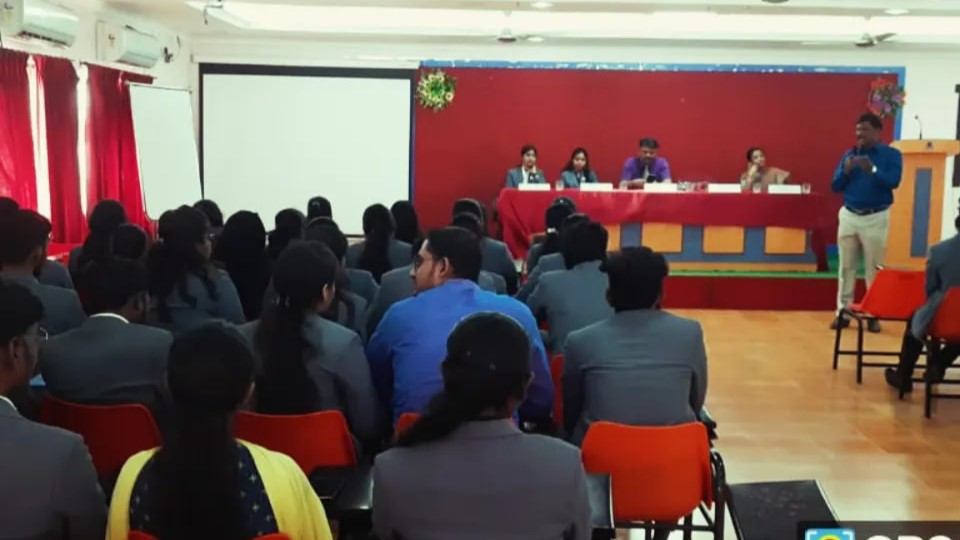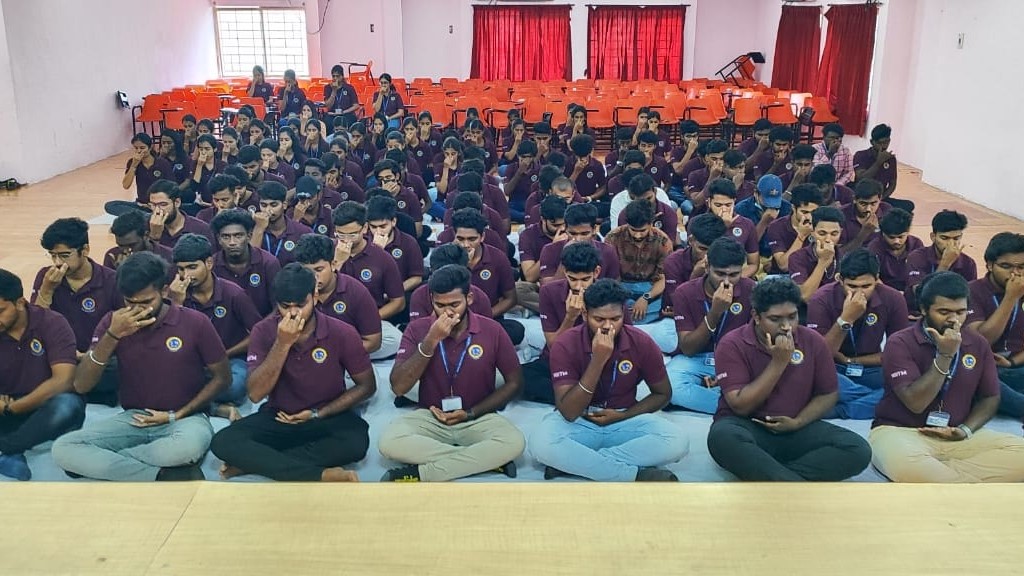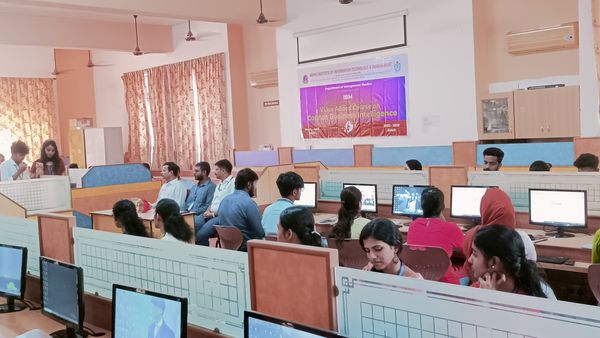NAAC QUALITATIVE AND QUANTITATIVE METRICS
NAAC (National Assessment And Accreditation Council)
India has one of the largest and diverse education systems in the world. Privatization, widespread expansion, increased autonomy and introduction of Programmes in new and emerging areas have improved access to higher education. At the same time, it has also led to widespread concern on the quality and relevance of the higher education. To address these concerns, the National Policy on Education (NPE, 1986) and the Programme of Action (PoA, 1992) spelt out strategic plans for the policies, advocated the establishment of an independent National accreditation agency. Consequently, the National Assessment and Accreditation Council (NAAC) was established in 1994 as an autonomous institution of the University Grants Commission (UGC) with its Head Quarter in Bengaluru. The mandate of NAAC as reflected in its vision statement is in making quality assurance an integral part of the functioning of Higher Education Institutions (HEIs).
The NAAC functions through its General Council (GC) and Executive Committee (EC) comprising educational administrators, policy makers and senior academicians from a cross-section of Indian higher education system. The Chairperson of the UGC is the President of the GC of the NAAC, the Chairperson of the EC is an eminent academician nominated by the President of GC (NAAC). The Director is the academic and administrative head of NAAC and is the member-secretary of both the GC and the EC. In addition to the statutory bodies that steer its policies and core staff to support its activities NAAC is advised by the advisory and consultative committees constituted from time to time.
CRITERION 1 - Curricular Aspects (100)
| METRIC NO | METRIC | WEIGHTAGE |
|---|---|---|
| 1.1.1 | The Institution ensures effective curriculum planning and delivery through a well-planned and documented process including Academic calendar and conduct of continuous internal Assessment | 20 |
| METRIC NO | METRIC | WEIGHTAGE |
|---|---|---|
| 1.2.1 | Number of Certificate/Value added courses offered and online courses of MOOCs, SWAYAM, NPTEL etc. where the students of the institution have enrolled and successfully completed during the last five years) | 15 |
| 1.2.2 | Percentage of students enrolled in Certificate/ Value added courses and also completed online courses of MOOCs, SWAYAM, NPTEL etc. as against the total number of students during the last five years | 15 |
| METRIC NO | METRIC | WEIGHTAGE |
|---|---|---|
| 1.3.1. | Institution integrates crosscutting issues relevant to Professional Ethics, Gender, Human Values, Environment and Sustainability in transacting the Curriculum | 10 |
| 1.3.2. | Percentage of students undertaking project work/field work/ internships (Data for the latest completed academic year) | 20 |
| METRIC NO | METRIC | WEIGHTAGE |
|---|---|---|
| 1.4.1. | Institution obtains feedback on the academic performance and ambience of the institution from various stakeholders, such as Students, Teachers, Employers, Alumni etc. and action taken report on the feedback is made available on institutional website. | 20 |
CRITERION 2 - Teaching Learning and Evaluation (350)
| METRIC NO | METRIC | WEIGHTAGE |
|---|---|---|
| 2.1.1 | Enrolment percentage | 20 |
| 2.1.2 | Percentage of seats filled against reserved categories (SC, ST, OBC, etc.) as per applicable reservation policy for the first year admission during the last five years | 20 |
| METRIC NO | METRIC | WEIGHTAGE |
|---|---|---|
| 2.2.1 | Student – Full time Teacher Ratio (Data for the latest completed academic year) | 40 |
| METRIC NO | METRIC | WEIGHTAGE |
|---|---|---|
| 2.3.1 | Student centric methods, such as experiential learning, participative learning and problem solving methodologies are used for enhancing learning experiences and teachers use ICT- enabled tools including online resources for effective teaching and learning process | 40 |
| METRIC NO | METRIC | WEIGHTAGE |
|---|---|---|
| 2.4.1 | Percentage of full-time teachers against sanctioned posts during the last five years | 15 |
| 2.4.2 | Percentage of full time teachers with NET/SET/SLET/ Ph. D./D.Sc. / D.Litt./L.L.D. during the last five years (consider only highest degree for count) | 25 |
| METRIC NO | METRIC | WEIGHTAGE |
|---|---|---|
| 2.5.1 | Mechanism of internal/ external assessment is transparent and the grievance redressal system is time- bound and efficient | 40 |
| METRIC NO | METRIC | WEIGHTAGE |
|---|---|---|
| 2.6.1. | Programme Outcomes (POs) and Course Outcomes (COs) for all Programmes offered by the institution are stated and displayed on website | 25 |
| 2.6.2 | Attainment of POs and COs are evaluated | 20 |
| 2.6.3 | Pass percentage of Students during last five years (excluding backlog students) | 45 |
| METRIC NO | METRIC | WEIGHTAGE |
|---|---|---|
| 2.7.1. | Online student satisfaction survey regarding to teaching learning process. | 60 |
CRITERION 3 – Research, Innovations and Extension (110)
| METRIC NO | METRIC | WEIGHTAGE |
|---|---|---|
| 3.1.1. | Grants received from Government and non-governmental agencies for research projects / endowments in the institution during the last five years | 10 |
| METRIC NO | METRIC | WEIGHTAGE |
|---|---|---|
| 3.2.1 | Institution has created an ecosystem for innovations, Indian Knowledge System (IKS),including awareness about IPR, establishment of IPR cell, Incubation centre and other initiatives for the creation and transfer of knowledge/technology and the outcomes of the same are evident | 10 |
| 3.2.2 | Number of workshops/seminars/conferences including programs conducted on Research Methodology, Intellectual Property Rights (IPR) and entrepreneurship during the last five years | 5 |
| METRIC NO | METRIC | WEIGHTAGE |
|---|---|---|
| 3.3.1. | Number of research papers published per teacher in the Journals as notified on UGC CARE list during the last five years | 10 |
| 3.3.2. | Number of books and chapters in edited volumes/books published and papers published in national/ international conference proceedings per teacher during last five years | 15 |
| METRIC NO | METRIC | WEIGHTAGE |
|---|---|---|
| 3.4.1. | Outcomes of Extension activities in the neighborhood community in terms of impact and sensitizing the students to social issues for their holistic development during the last five years. | 15 |
| 3.4.2 | Awards and recognitions received for extension activities from government / government recognised bodies | 5 |
| 3.4.3 | Number of extension and outreach programs conducted by the institution through organized forums including NSS/NCC with involvement of community during the last five years | 20 |
| METRIC NO | METRIC | WEIGHTAGE |
|---|---|---|
| 3.5.1. | Number of functional MoUs/linkages with institutions/ industries in India and abroad for internship, on-the-job training, project work, student / faculty exchange and collaborative research during the last five years | 20 |
CRITERION 4 – Infrastructure and Learning Resources (100)
| METRIC NO | METRIC | WEIGHTAGE |
|---|---|---|
| 4.1.1. | The Institution has adequate infrastructure and other facilities for a. teaching – learning, viz., classrooms, laboratories, computing equipment etc b. ICT – enabled facilities such as smart class, LMS etc. Facilities for Cultural and sports activities, yoga centre, games (indoor and outdoor), Gymnasium, auditorium etc | 20 |
| 4.1.2 | Percentage of expenditure for infrastructure development and augmentation excluding salary during the last five years | 10 |
| METRIC NO | METRIC | WEIGHTAGE |
|---|---|---|
| 4.2.1. | Library is automated with digital facilities using Integrated Library Management System (ILMS), adequate subscriptions to e-resources and journals are made. The library is optimally used by the faculty and students | 20 |
| METRIC NO | METRIC | WEIGHTAGE |
|---|---|---|
| 4.3.1. | Institution frequently updates its IT facilities and provides sufficient bandwidth for internet connection | 20 |
| 4.3.2. | Student – Computer ratio (Data for the latest completed academic year) | 10 |
| METRIC NO | METRIC | WEIGHTAGE |
|---|---|---|
| 4.4.1 | Percentage expenditure incurred on maintenance of infrastructure (physical and academic support facilities) excluding salary component during the last five years | 20 |
CRITERION 5-Student Support and Progression (140)
| METRIC NO | METRIC | WEIGHTAGE |
|---|---|---|
| 5.1.1 | Percentage of students benefited by scholarships and freeships provided by the institution, government and non-government bodies, industries, individuals, philanthropists during the last five years | 20 |
| 5.1.2 | Following capacity development and skills enhancement activities are
organised for improving students’ capability
|
10 |
| 5.1.3 | Percentage of students benefitted by guidance for competitive examinations and career counseling offered by the Institution during the last five years | 10 |
| 5.1.4 | The institution adopts the following for redressal of student grievances including sexual harassment and ragging cases 1. Implementation of guidelines of statutory/regulatory bodies 2. Organisation wide awareness and undertakings on policies with zero tolerance 3. Mechanisms for submission of online/offline students’ grievances 4. Timely redressal of the grievances through appropriate committees | 10 |
| METRIC NO | METRIC | WEIGHTAGE |
|---|---|---|
| 5.2.1 | Percentage of placement of outgoing students and students progressing to higher education during the last five years | 25 |
| 5.2.2 | Percentage of students qualifying in state/national/ international level examinations during the last five years | 10 |
| METRIC NO | METRIC | WEIGHTAGE |
|---|---|---|
| 5.3.1 | Number of awards/medals for outstanding performance in sports/ cultural activities at University / state/ national / international level during the last five years | 20 |
| 5.3.2 | Average number of sports and cultural programs in which students of the Institution participated during last five years | 25 |
| METRIC NO | METRIC | WEIGHTAGE |
|---|---|---|
| 5.4.1 | There is a registered Alumni Association that contributes significantly to the development of the institution through financial and/or other support services | 10 |
CRITERION 6- Governance, Leadership and Management (100)
| METRIC NO | METRIC | WEIGHTAGE |
|---|---|---|
| 6.1.1 | The institutional governance and leadership are in accordance with the vision and mission of the Institution and it is visible in various institutional practices such as NEP implementation, sustained institutional growth, decentralization, participation in the institutional governance and in their short term and long term Institutional Perspective Plan. | 15 |
| METRIC NO | METRIC | WEIGHTAGE |
|---|---|---|
| 6.2.1 | The institutional perspective plan is effectively deployed and functioning of the institutional bodies is effective and efficient as visible from policies, administrative setup, appointment, service rules, and procedures, etc. | 8 |
| 6.2.2 | Institution implements e-governance in its operations 1. Administration including complaint management 2. Finance and Accounts 3. Student Admission and Support 4. Examinations | 4 |
| METRIC NO | METRIC | WEIGHTAGE |
|---|---|---|
| 6.3.1 | The institution has performance appraisal system, effective welfare measures for teaching and non-teaching staff and avenues for career development/progression | 6 |
| 6.3.2 | Percentage of teachers provided with financial support to attend conferences/workshops and towards membership fee of professional bodies during the last five years | 12 |
| 6.3.3 | Percentage of teaching and non-teaching staff participating in Faculty development Programmes (FDP), Management Development Programmes (MDPs) professional development /administrative training programs during the last five years | 15 |
| METRIC NO | METRIC | WEIGHTAGE |
|---|---|---|
| 6.4.1 | Institution has strategies for mobilization and optimal utilization of resources and funds from various sources (government/ non-government organizations) and it conducts financial audits regularly (internal and external) | 10 |
| METRIC NO | METRIC | WEIGHTAGE |
|---|---|---|
| 6.5.1 | Internal Quality Assurance Cell (IQAC) has contributed significantly for institutionalizing the quality assurance strategies and processes. It reviews teaching learning process, structures & methodologies of operations and learning outcomes at periodic intervals and records the incremental improvement in various activities | 15 |
| 6.5.2 | Quality assurance initiatives of the institution include: 1. Regular meeting of Internal Quality Assurance Cell (IQAC); quality improvement initiatives identified and implemented 2. Academic and Administrative Audit (AAA) and follow-up action taken 3. Collaborative quality initiatives with other institution(s) 4. Participation in NIRF and other recognized rankings 5. Any other quality audit/accreditation recognized by state, national or international agencies such as NAAC, NBA etc. | 15 |
CRITERION 7- Institutional Values and Best Practices (100)
| METRIC NO | METRIC | WEIGHTAGE |
|---|---|---|
| 7.1.1 | Institution has initiated the Gender Audit and measures for the promotion of gender equity during the last five years. | 10 |
| 7.1.2 | The Institution has facilities and initiatives for
|
20 |
| 7.1.3 | Quality audits on environment and energy regularly undertaken by the Institution.
The institutional environment and energy initiatives are confirmed through the following
|
10 |
| 7.1.4 | Describe the Institutional efforts/initiatives in providing an inclusive environment i.e., tolerance and harmony towards cultural, regional, linguistic, communal socioeconomic diversity and Sensitization of students and employees to the constitutional obligations: values, rights, duties and responsibilities of citizens | 10 |
| METRIC NO | METRIC | WEIGHTAGE |
|---|---|---|
| 7.2.1 | Describe two best practices successfully implemented by the Institution as per NAAC format provided in the Manual | 30 |
| METRIC NO | METRIC | WEIGHTAGE |
|---|---|---|
| 7.3.1 | Portray the performance of the Institution in one area distinctive to its priority and thrust within 1000 words | 20 |
| 1.1 | Number of students year wise during the last five years |
| 2.1 | Number of full time teachers during the last five years |
| 3.1 | Expenditure excluding salary component year wise during the last five years |
DVV Clarification
DISABLED FRIENDLY CAMPUS
Soft Skills
In today’s fast-paced and interconnected world, the importance of soft skills cannot be overstated. Our institution offers comprehensive soft skills training programs designed to equip students with essential interpersonal skills, foster leadership qualities, and enhance teamwork and problem-solving abilities. These skills are crucial for personal and professional success, making our training programs invaluable.


Language and Communication Skills
By focusing on language proficiency, effective communication techniques, cultural awareness, and confidence-building, we equip our students with the essential skills needed to thrive personally and professionally. Our institution provides a supportive environment where students can practice their skills and receive constructive feedback. Through presentations, group discussions, and peer interactions, they develop the self-assurance needed to express their ideas and opinions boldly.
Life Skills
In an ever-evolving world, the importance of life skills that contribute to overall well-being is paramount. Our life skills programs – like Yoga, outbound training, Marketing Melas and others, help students to have a balanced and healthy life. By integrating these components, we empower our students to cultivate well-being in all aspects of their lives. As they develop these life skills, they become more resilient, informed, and active individuals, ready to face challenges and lead healthier lives.


ICT / Computing Skills
Our hands-on workshops provide students with the opportunity to explore a range of ICT tools and software applications. Through interactive sessions, students gain practical experience in areas such as coding, data analysis, and digital design. These workshops not only enhance technical skills but also foster creativity and innovation, empowering students to apply their knowledge in real-world scenarios.
Stake Holders Feedback
Nehru Institute of Information Technology and Management are dedicated to providing quality education and a conducive learning environment. To maintain and enhance our educational standards, we have implemented a comprehensive feedback mechanism involving various stakeholders including students, teachers, employers, alumni, and parents.